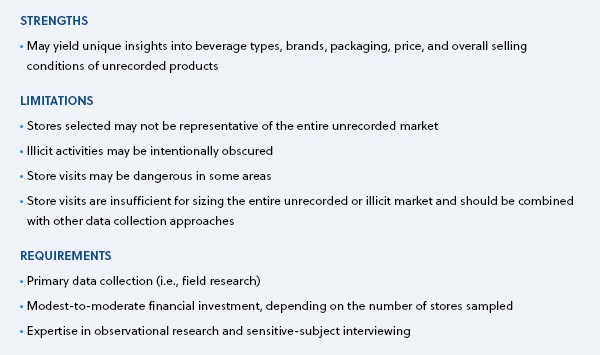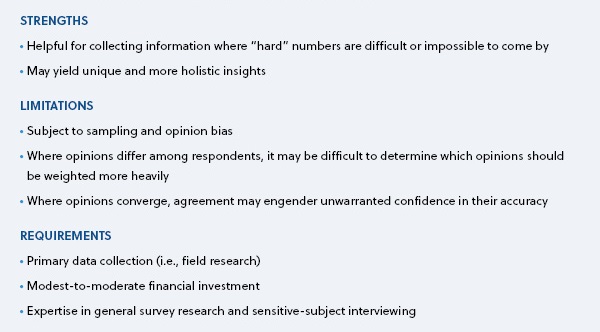What drives unrecorded production and consumption?
Country-level demographic, economic, and socio-cultural factors
What drives unrecorded production and consumption?
Country-level demographic, economic, and socio-cultural factors
Other potential drivers of the unrecorded market include socio-cultural and other contextual factors, such as social norms concerning the acceptance of unrecorded products. For example, consumption of licit unrecorded alcohol, such as licit home-produced wine, is often seen as more socially acceptable than consumption of illicit unrecorded or surrogate alcohol. Moreover, independent of actual legal statutes, some illicit products may seem more or less “illicit” in the eyes of society. For example, contraband products, given that they involve the original product, may not be viewed in the same way culturally as counterfeit products. And illicit artisanal beverages may have premium connotations because of the unique rustic image and taste that make them aspirational for some consumers.
Country-level demographics are also likely to influence the unrecorded market. For example, unrecorded alcohol consumption tends to be more heavily concentrated in poorer countries. As incomes rise, total alcohol consumption tends to increase while the relative proportion of unrecorded alcohol consumption tends to decrease (WHO, 2011).
Population-Based Surveys


Surveys can be used to identify collective attitudes about unrecorded products and their consumption.
Store Visits


Sales practices can serve as a proxy indicator of the cultural acceptability of these types of products. Store visits can provide information on whether unrecorded products are sold openly, which suggests greater cultural acceptance.
Official Statistics
National statistics on average income, as well as data from national expenditure surveys, may also be helpful for understanding economic drivers.
Expert Interviews


Experts such as cultural scholars, anthropologists, and other academic researchers may also be able to provide insights into the socio-demographic and cultural drivers of the unrecorded market. For example, patriotic festivities (such as independence days) and local festivals often cause a spike in the production and consumption of artisanal beverages. These occasions may be specific to certain ethnic groups and regions of a country (for example, the Afro-Colombian community on the Pacific Coast of Colombia) where specific beverages are consumed during certain times of the year to mark the local cultural heritage.
